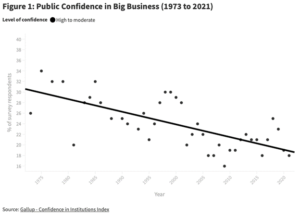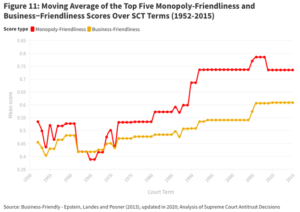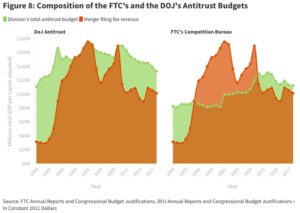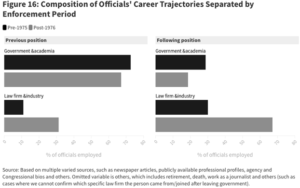On March 21, 2022, the SEC issued for public comment a new climate-related rule proposal that, if adopted, would require registrants to provide certain climate-related information in their registration statements and annual reports filed with the SEC. Specifically, the proposed rule would require:
- A new section in annual reports and registration statements titled “Climate-Related Disclosure,” which would include climate-related governance, risk, business impacts, targets and goals and other related disclosures;
- Disclosure of a company’s Scope 1, Scope 2 and, if material, Scope 3 GHG emissions, along with an attestation report from an independent GHG emissions expert covering the Scope 1 and Scope 2 emissions disclosures; and
- A new footnote to a registrant’s audited financial statements that provides climate-related metrics and impacts on a line-item
This memorandum addresses potential causes of action that could arise under U.S. law based on a company’s climate-related disclosures if the rule is promulgated as proposed, as well as potential defenses to those claims.
POTENTIAL CAUSES OF ACTION
We have outlined below the potential federal and state law causes of action that a plaintiff might bring against a company in connection with the climate-related disclosures that would be required by the SEC’s proposed rule.
Federal Securities Claims
Potential Causes of Action
The new disclosure requirements created by the SEC’s proposed rules could give rise to litigation based on alleged violations of the federal securities laws. Plaintiffs seeking to bring such a suit would likely allege one or more of the following causes of action:
- Sections 11, 12(a)(2), and 15 of the Securities Act of 1933 (the “Securities Act”), and
- Sections 10(b) and 20(a) of the Securities Exchange Act of 1934 (the “Exchange Act”) and Rule 10b-5 promulgated
Section 11 of the Securities Act imposes liability on issuers, directors, underwriters, and others for material misstatements or omissions in a registration statement. Section 12(a)(2) generally imposes liability on any person who offers to sell or sells a security by means of a material misstatement or omission in a prospectus. Notably, a plaintiff bringing either a Section 11 or Section 12(a)(2) claim does not need to prove scienter (i.e. that the defendant acted with an intent to deceive or recklessness) or reliance. However, under Section 11, non-issuer defendants have an affirmative defense to liability if they show that (i) for portions of the registration statement that were prepared by experts, they had no reasonable grounds to believe that the expert-prepared portion was untrue and did not actually believe it to be untrue, or (ii) for portions that were not prepared by experts, after reasonable investigation, they believed that the statements in the non-expert-prepared portion were true and free of material omissions. A similar affirmative defense exists under Section 12(a)(2) if non-issuer defendants show that, in the exercise of “reasonable care,” they could not have known of the alleged misstatement or omission.
Section 10(b) and the corresponding Rule 10b-5 more broadly prohibit the making of any untrue statement or omission of a material fact in connection with the purchase or sale of securities with the intent to defraud or deceive. Thus, Section 10(b) and Rule 10b-5 cover a broader range of statements than the Section 11 and 12(a)(2) claims discussed above, as they are not limited to statements in registration statements and prospectuses. Additionally, unlike claims under Section 11 and 12(a)(2), which are generally limited to disclosures made in connection with offerings of securities within the prior three years, claims under Section 10(b) and Rule 10b-5 can be brought by investors in previously issued securities traded on the secondary market (including common stock).
Section 15 and Section 20(a) provide that any person who directly or indirectly “controls” another person found liable for a violation of the Securities Act or Exchange Act, respectively, or any regulation thereunder is jointly and severally liable, to the same extent as the controlled person, to any person to whom the controlled person is liable. Thus, liability requires that the “controlled” person violated the relevant federal securities law(s) (the “primary violator”), and proof that the person alleged to have violated with Section 15 or 20(a) “controlled” the primary violator.
Because the SEC’s proposed rule requires additional disclosure in a company’s annual reports and in registration statements, these new disclosures could provide additional statements for investors to challenge as misrepresentations and omissions under these federal securities laws. Even before the SEC’s proposal, private litigants in the U.S. were increasingly pursuing claims challenging environmental disclosures, as well as other social and corporate governance disclosures. For example, in recent years, securities litigation has been filed after events such as natural disasters, oil spills, data privacy breaches, allegations of bribery and corruption, and workplace misconduct.
Given the rise in this kind of securities litigation, it seems likely that plaintiffs will challenge climate- related disclosures made under the proposed SEC rules by companies that experience similar catastrophic events claiming that the climate-related disclosures were misleading because they failed to adequately disclose the conditions that led to the events, particularly with respect to the disclosures called for by the requirements for:
- Climate-related risk disclosures – disclosures inter alia about climate-related risks or opportunities reasonably likely to have a material impact on the company, the actual and potential impacts of the identified risk, and resilience of the company’s business strategy in light of potential future changes in climate-related risks); and
- Climate-related metric disclosures – disclosures regarding certain climate-related physical impacts , transition impacts , transition expenditures , and mitigation expenditures .
It is also possible that inaccuracies in the metrics required to be disclosed under the SEC’s proposal could give rise to securities liability. Indeed, plaintiffs have already brought claims alleging material misrepresentations regarding how companies calculate the financial impact of certain projects with climate change implications. Similar allegations of misrepresentations or omissions could arise from each of the categories of disclosure required the proposed rule. For example, under the proposed rule:
- Registrants would be required to disclose certain information concerning the board’s oversight of climate-risks and management’s role in assessing and managing those risks. To comply with this new disclosure requirement, a company might describe an extensive climate-related governance structure where in reality the governance structure does not exist or is substantially less robust than described.
- Registrants would also be required to disclose in their registration statements and annual reports, their Scope 1 , Scope 2 and Scope 3 greenhouse gas (“GHG”) emissions. To comply with this new disclosure requirement, a company might disclose a certain level of Scope 1 emissions where in reality, the emissions are much higher.
Potential Defenses: The Materiality Problem and Safe Harbors
Though there are a number of potential bases for federal securities claims based on a company’s climate-related disclosures under the SEC’s proposed rules, we expect potential plaintiffs may face significant hurdles in successfully pursuing these claims.
First, at least in the near term, the materiality element may pose the most significant challenge for potential plaintiffs. Disclosures are considered “material” for these purposes if there is a substantial likelihood that a reasonable investor would consider the disclosed information important in deciding how to vote or make an investment decision. Under this standard, the impact of any given piece of information on a company’s stock price generally is a key element of the materiality analysis under current law. But it is not clear that the market would necessarily consider all of the disclosures required by the SEC’s proposed rules to be important so as to make them “material” under this historical test. Indeed, certain disclosure requirements seem to be based not on what a “reasonable investor” would view as important, but instead on what general stakeholders and the greater public would find significant. For example, the Scope 3 emissions disclosures seem to be based on general concern over climate accountability, rather than the company’s own long-term financial value.
Second, even if a plaintiff were successful in establishing liability, there may be additional challenges for a plaintiff when it comes to proving damages. For example, damages under Section 10(b) and Rule 10b-5 are generally calculated based on the share price decline that occurs when the “truth” concerning prior alleged misstatements and omissions is revealed to the market. As a result, if there is not a significant decrease in the value of the security upon the revelation of the truth, for example because the alleged misstatements or omissions do not have a substantial impact on the company’s performance or outlook, or because the market does not place much value on those disclosures, potential damages may be very small. Although damages under Section 11 and 12(a)(2) are calculated somewhat differently, both provisions contain affirmative defenses if a defendant can show the plaintiff’s losses were not caused by the alleged misstatement or omission, which may also limit potential exposure where there are not significant share price declines following the disclosure of alleged truth concerning the climate-change related disclosure.
Third, for eligible issuers, the Private Securities Litigation Reform Act of 1995 (“PSLRA”) provides a safe harbor for forward looking statements that are “identified as forward looking statements, and [are] accompanied by meaningful cautionary statements,” that are immaterial, or that are not made with “actual knowledge” that the statement was false and misleading. The forward looking statements safe harbor likely applies, for example, to the proposed disclosures regarding climate-related impacts on a company’s strategy and business model, including the assessment of the resilience of the company’s business strategy in light of potential future changes in climate- related risks. Even for issuers and offerings that are not eligible for the PSLRA safe harbor, the “bespeaks caution” doctrine provides a similar defense where a forward-looking statement is accompanied by meaningful cautionary language.
Fourth, the SEC’s proposed rule itself also contains a safe harbor for Scope 3 emissions disclosures. Pursuant to this limitation, any statement made in a document filed with the SEC regarding Scope 3 emissions required by the proposed rules is deemed not to be a fraudulent statement, unless it is shown that such statement was made or reaffirmed without a reasonable basis or was disclosed other than in good faith. According to the SEC’s proposing release, the proposed safe harbor is intended to mitigate potential liability concerns associated with providing emissions disclosure based on third-party information.
Fifth, non-issuer defendants, such as underwriters, may be able to assert a due diligence defense for Section 11 claims and a reasonable care defense for Section 12(a)(2) claims described above. This is particularly true where the non-issuer needs to rely on experts for certain information – such as the attestation report from an independent expert for the Scope 1 and Scope 2 emissions disclosures – because a non-issuer is generally entitled to rely on that expertise in the absence of “red flags” concerning the reliability of the information provided by the experts.
State Law Claims
Derivative Shareholder Litigation
As an alternative to securities lawsuits, plaintiffs could also seek to use disclosures required by the SEC’s proposed rule or securities class actions filed concerning those disclosures to form the basis for state-law claims against a company, such as shareholder derivative suits brought on behalf of the company against directors and officers of the company alleging that officers and directors breached their fiduciary duties to shareholders and caused harm to the corporation.
Plaintiffs bringing derivative suits must allege that there has been a substantive breach of fiduciary duties such as the duty of care, duty of loyalty, or duty of good faith. The duty of care requires the board of directors to exercise care in making decisions on behalf of the company, based on adequate information and a good faith belief that the decisions are in the best interest of the company and its stockholders.
Again, even before the SEC’s proposed rules, a number of such derivative suits have been brought concerning environmental, social and governance issues. For example, a recent trend has been for shareholders to sue when the board fails to meet an announced goal, such as increasing board diversity. Although many of these suits have been dismissed because the challenged statements about achieving such a “goal” were considered “inactionable puffery,” or because plaintiffs had otherwise failed to allege any material facts to support an inference that the statements were false or misleading, it is possible that the new disclosures required by the SEC’s proposed rule could provide additional ammunition for such suits challenging failures to meet announced climate change goals.
Plaintiffs in the U.S. may seek to emulate more novel causes of action that are being pursued outside to the U.S. and, for example, try and bring suit for breach of the duties of good faith if a company includes a GHG emissions reduction target or goal in its disclosures but falls short of its goals.
Potential Defenses to Shareholder Derivative Suits
Just as with the potential securities suits described above, plaintiffs are likely to face challenges in pursuing these kinds of shareholder derivative suits.
As an initial matter, before bringing derivative suits plaintiffs must generally fulfill procedural requirements, including first demanding that the board bring suit or showing that making such a demand would be futile because of director conflicts. Also, courts typically evaluate duty of care claims using the business judgment rule, pursuant to which a court will uphold the decisions of the board as long as the decisions are made (1) in good faith, (2) with the care that a reasonably prudent person would use, and (3) with the reasonable belief that the directors are acting in the best interests of the corporation. The business judgment rule is in essence a presumption in favor of the board, which generally can only be defeated if the plaintiff can provide gross negligence, bad faith, or a conflict of interest.
Other Considerations
Another way in which the SEC’s proposed rule may result in increased litigation risk is by allowing plaintiffs in other types of litigation to use the content of the disclosures themselves, even without alleging that the disclosures contain any alleged omissions or misstatements.
For example, the climate-related disclosures could be used as evidence in litigations bringing state law tort claims about environmental damage caused by a company’s operations, and consumer protection claims about misrepresentations about the environmental impact of a company’s products or the company’s environmentally safe business practices. Similarly, plaintiffs may seek to use the disclosures to allege “greenwashing” claims in which plaintiffs allege misleading information and misrepresentation with respect to a company’s affirmative sustainability claims.
CONCLUSION
If the SEC promulgates the proposed rule in its current or substantially similar form, there are a number of litigation risks that could arise from the required disclosures, including securities litigation, shareholder derivative claims, and other state law torts. However, as discussed above, there are also a number of legal obstacles that could limit a plaintiff’s ability to prove those claims. And even if a plaintiff were able to do so, there are additional hurdles that the plaintiff would need to overcome to establish damages.
Endnotes
1The proposal is set forth in the SEC’s March 21, 2022 release, available here.(go back)
2 For further detail about the proposed rule, please refer to our alert memos on the proposed disclosures for financial statements, GHG emissions(go back)
315 U.S.C.A § 77k.(go back)
415 U.S.C.A. § 77l (a)(2).(go back)
515 U.S.C.A § 77k; see also Rombach v. Chang, 355 F.3d 164, 169 n.4 (2d Cir. 2004) (“Neither Section 11 nor Section 12(a)(2) requires that plaintiffs allege the scienter or reliance elements of a fraud cause of action.”).(go back)
6Halliburton Co. v. Erica P. John Fund, Inc., 573 U.S. 258, 267 (2014) (“Section 10(b) of the Securities Exchange Act of 1934 and the Securities and Exchange Commission’s Rule 10b–5 prohibit making any material misstatement or omission in connection with the purchase or sale of any security.”).(go back)
7Under the proposed rule, “climate-related risks” means the actual or potential negative impacts of climate-related conditions and events on a registrant’s consolidated financial statements, business operations, or value chains, as a whole.(go back)
8Physical impacts during the year of “severe weather events and other natural conditions, such as flooding, drought, wildfires, extreme temperatures, and sea level rise.” Rule 14-02(c).(go back)
9Impact during the year of transition activities, defined as “any efforts to reduce GHG emissions or otherwise mitigate exposure to transition risks.” Rule 14-02(d).(go back)
10Expenditures during the year “to reduce GHG emissions or otherwise mitigate exposure to transition risks.” Rule 14- 02(f).(go back)
11Expenditures during the year “to mitigate the risks from severe weather events, and other natural conditions, such as flooding, drought, wildfires, extreme temperatures, and sea level rise.” Rule 14-02(e).(go back)
12“Scope 1 emissions” are direct GHG emissions from operations that are owned or controlled by the registrant. These might include emissions from registrant-owned or controlled machinery, vehicles or operations.(go back)
13“Scope 2 emissions” are indirect GHG emissions primarily resulting from the generation of energy purchased and consumed by the registrant. These emissions include purchased or acquired electricity, steam, heat, or cooling that is consumed by operations owned or controlled by a registrant.(go back)
14“Scope 3 emissions” are all indirect GHG emissions not otherwise included in a registrant’s Scope 2 emissions, which occur in the upstream and downstream activities of a registrant’s value chain. These emissions are a consequence of the registrant’s activities but are generated from sources that are neither owned nor controlled by the registrant.
These might include emissions associated with the production and transportation of goods a registrant purchases from third parties, employee commuting or business travel, and the processing or use of the registrant’s products by third parties. Under the proposed rules, a registrant would be required to disclose Scope 3 emissions if “material” or if the registrant has set a GHG emissions reduction target or goal that includes its Scope 3 emissions.(go back)
15TSC Industries v. Northway, 426 U.S. 438, 448-49 (1976).(go back)
16However, it is important to note that volatility of stock price, by itself, is typically considered insufficient for the relevant information to be deemed material. See, e.g., SEC Staff Accounting Bulletin “No. 99 – Materiality” (August 13, 1999), available here; see also ECA & Local 134 IBEW Joint Pension Trust of Chicago v. JP Morgan Chase Co., 553 F.3d 187, 205 (2d Cir. 2009).(go back)
17Plaintiffs bringing Section 10(b) and Rule 10b-5 claims face the additional challenges of proving scienter, actual reliance, and loss causation in addition to materiality. See Amgen Inc. v. Connecticut Ret. Plans & Tr. Funds, 568 U.S. 455, 460 (2013) (“To recover damages in a private securities-fraud action under § 10(b) of the Securities Exchange Act of 1934…and Securities and Exchange Commission Rule 10b–5, 17 CFR § 240.10b–5 (2011), a [] plaintiff must prove “(1) a material misrepresentation or omission by the defendant; (2) scienter; (3) a connection between the misrepresentation or omission and the *461 purchase or sale of a security; (4) reliance upon the misrepresentation or omission; (5) economic loss; and (6) loss causation.”). Plaintiffs bringing claims under Rule 10b- 5 must also meet the heightened pleading standards for such claims, which requires the plaintiff to plead with particularity facts raising a strong inference of scienter. See Tellabs, Inc. v. Makor Issues & Rts., Ltd., 551 U.S. 308, 321 (2007) (Holding that the Private Securities Litigation Reform Act imposed a heightened pleading standard in actions brought pursuant to Section 10(b) and Rule 10b-5 requiring plaintiffs to state with particularity facts giving rise to a “strong inference that defendant acted with the required state of mind”).(go back)
1815 U.S.C.A. § 77l(b); 15 U.S.C.A § 77k(e).(go back)
1915 U.S.C.A. § 77z-2.(go back)
20SEC’s March 21, 2022 release, available here.(go back)
21In re Worldcom, Inc. Securities Litig., 346 F. Supp. 2d 628 (S.D.N.Y. 2004).(go back)
22Rales v. Blasband, 634 A.2d 927, 932 (Del. 1993) (In a stockholder derivative suit, “a stockholder asserts a cause of action belonging to the corporation.”).(go back)
23United Food & Com. Workers Union v. Zuckerberg, No. 404, 2020, 2021 WL 4344361 at *1049-1050 (Del. 2021) (Discussing the duties of care and loyalty that directors and officers owe to corporations under Delaware law).(go back)
24Rales, 634 A.2d at 932 (“Because directors are empowered to manage, or direct the management of, the business and affairs of the corporation [] the right of a stockholder to prosecute a derivative suit is limited to situations where the stockholder has demanded that the directors pursue the corporate claim and they have wrongfully refused to do so or where demand is excused because the directors are incapable of making an impartial decision regarding such litigation.”).(go back)
25Aronson v. Lewis, 473 A.2d 805, 812 (Del. 1984)(“It is a presumption that in making a business decision the directors of a corporation acted on an informed basis, in good faith and in the honest belief that the action taken was in the best interests of the company…absent an abuse of discretion, that judgment will be respected by the courts. The burden is on the party challenging the decision to establish facts rebutting the presumption”), overruled on other grounds by Brehm v. Eisner, 746 A.2d 244 (Del. 2000).(go back)
26Aronson, 473 A.2d at 812 (“While the Delaware cases use a variety of terms to describe the applicable standard of care, our analysis satisfies us that under the business judgment rule director liability is predicated upon concepts of gross negligence.”).(go back)




Friends in High Places: Political Ties and SEC Oversight of Foreign Firms
More from: Jill Fisch, Xian Gu
Jill E. Fisch is the Saul A. Fox Distinguished Professor of Business Law and Co-Director of the Institute for Law and Economics at the University of Pennsylvania Carey Law School and Xian Gu is an Associate Professor in Finance at Durham University Business School. This post is based on their recent paper.
Foreign firms that are traded in the U.S. markets, represent a significant proportion of publicly-traded firms. Such firms are subject to U.S. securities regulation. The legal bonding theory suggests that by subjecting themselves to U.S. law, foreign issuers enhance their value in the eyes of investors. However, compared to U.S. domestic firms, foreign firms are much less frequently the subject of official SEC enforcement actions. In this study, we provide a first investigation of how the political landscape, specifically the bilateral political ties between the U.S. and a foreign issuer’s home country, plays a role in SEC’s oversight of U.S.-listed foreign firms.
The SEC’s oversight of publicly-traded firms includes both routine monitoring through comment letter reviews of firm’s reporting compliance and pursuing enforcement actions against firms if their public reporting is deficient. One difficulty in analyzing SEC’s selection of enforcement targets lies in the limited public information on the SEC’s first-stage informal inquiry. In this study, we investigate both comment letters and formal enforcement actions and integrate our results into one picture.
We examine 10-K and 20-F related comment letters, and enforcement actions against foreign issuers related to accounting and auditing issues. Our empirical analysis reveals two main sets of findings. First, political ties between a foreign firm’s home country and the U.S. are an important determinant of SEC oversight, including both the likelihood of receiving comment letters and that of being subject to an SEC enforcement action. If a foreign firm’s home country has stronger political ties with the U.S., then the frequency of comment letters issued by the SEC is lower, the tone of the comment letters is less negative and litigious, and the firm is less likely to be the subject of an SEC enforcement action. The effect of political ties is more pronounced during Democratic presidencies. We did not find any significant impact of the political relationship on private securities fraud litigation, i.e. class action lawsuits. READ MORE »